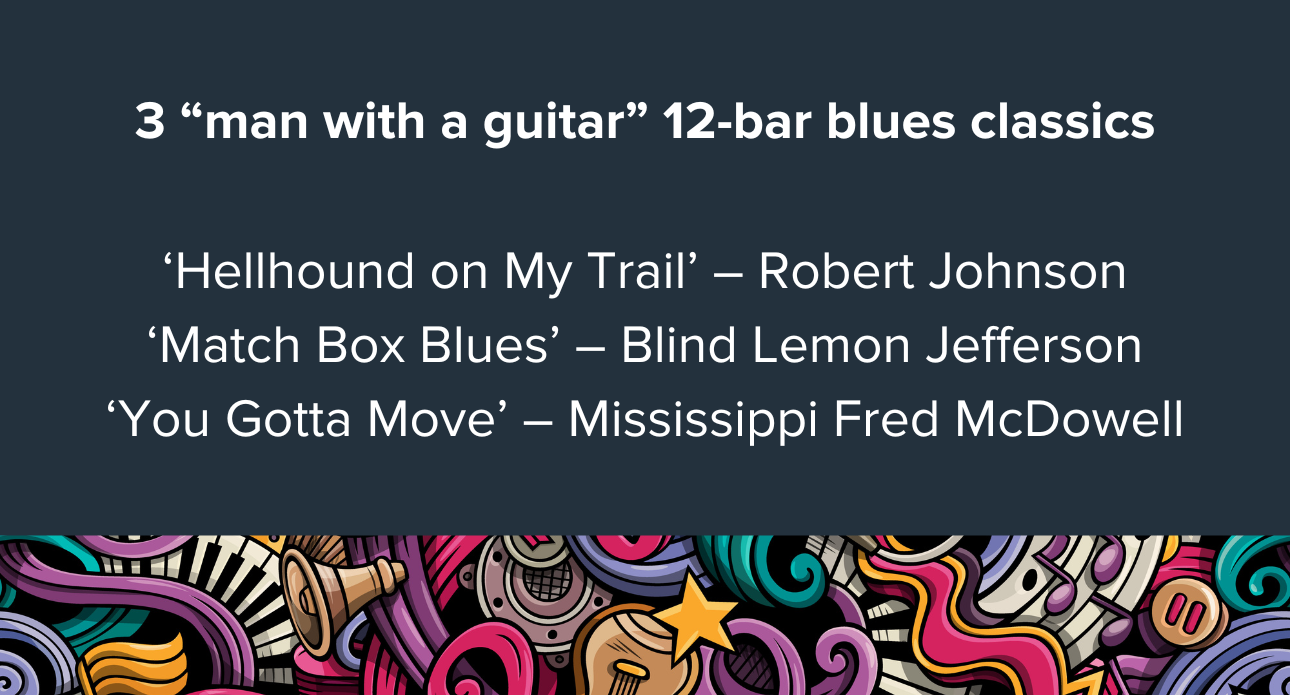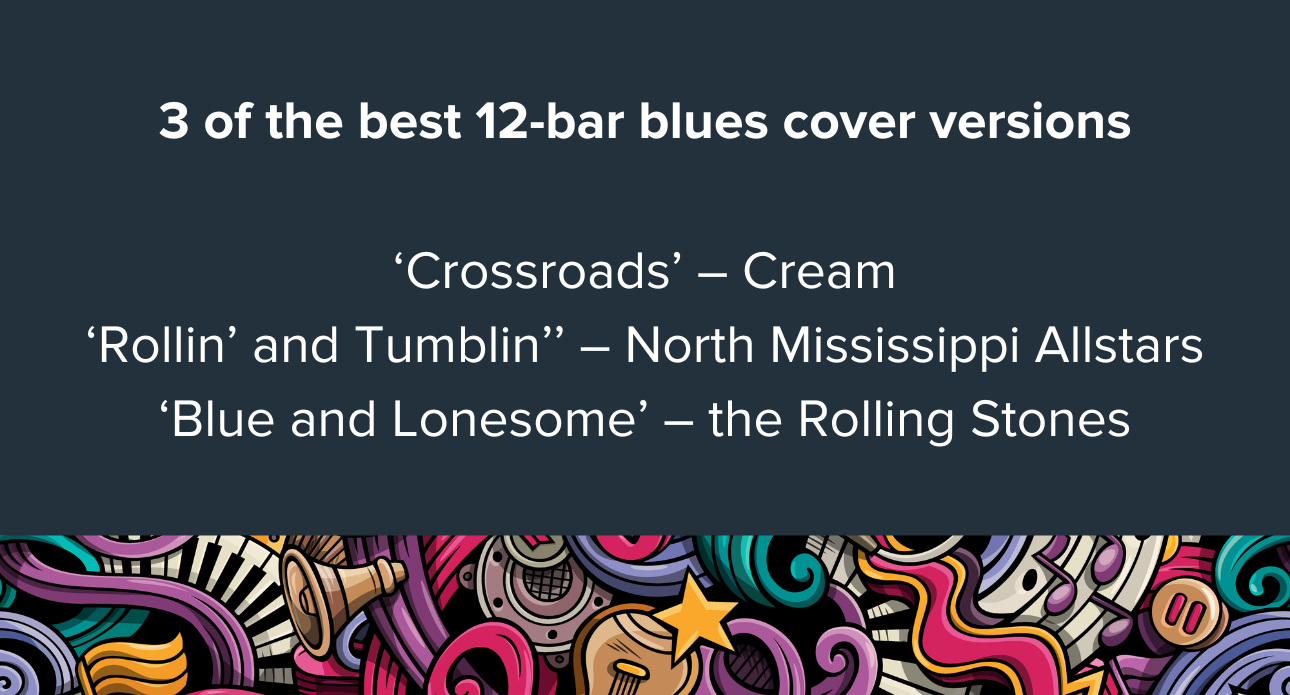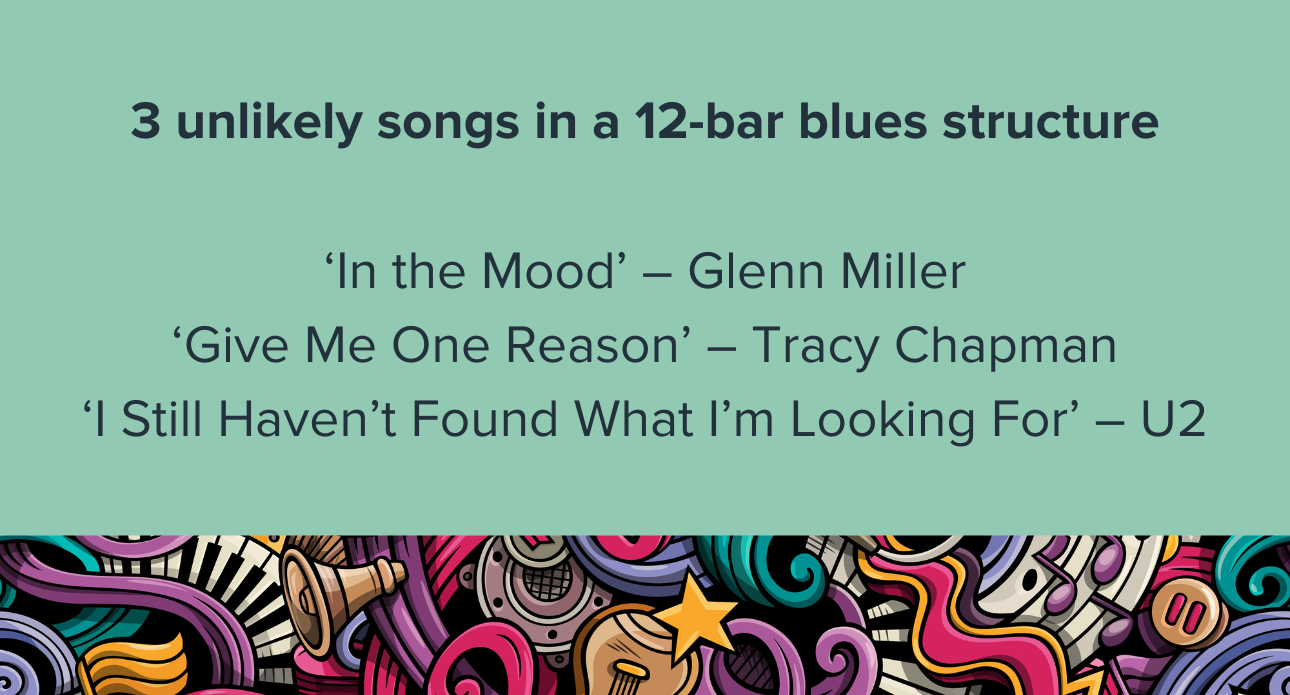The form of music known as the blues originated in the deep south (Mississippi, not Devon) in the late 19th century.
It was derived from a mix of the plantation slave work songs and spirituals.
Because the originators lacked any traditional musical instruments, the tunes had to be improvised and then passed on through oral tradition.
It was only in the early 1900s when W.C. Handy started transcribing and publishing songs that the blues became more popular, and more people wanted to perform it. As a result, the most common patterns were then written down, one of which was the 12-bar blues.
Of all the different musical genres, the blues is the one I probably listen to more than any other, and the 12-bar blues is the one I play most often on the three-string cigar box guitar I bought at a blues festival 10 years ago.
If you’re new to the blues and the 12-bar genre, I’ve dotted a few classics throughout this article to help whet your appetite.

A quick 12-bar blues explainer
The 12-bar blues is so simple you can use numbers to explain it. Those numbers are:
1111, 4411, 5411.
As you can see, there are 12 numbers, one for each bar.
The number one denotes the lowest note you play. So, in the most basic form without any sevenths or suspended chords, a simple 12-bar progression is CCCC, FFCC, GFCC.
Then when you get to the end, known as the “turn”, you go back to the beginning and start again.
It’s simple, because it had to be. After all, most of the people who originally played it earned a pittance and there was no way they could afford any kind of instruments, so there was little scope for virtuosity or improvisation.
So, in homage to those musical pioneers, in this article you can read about two very simple takeaways from the 12-bar blues to help guide your marketing thinking.

1. You can’t build on sand
As in most songs, the 12-bar structure provides a simple and strong underlying rhythm above which melody and vocals can flourish.
But without that underlying rhythm, everything becomes a mess.
In the same way, there are some essential underlying requirements you have to fulfil before you can effectively start to market your business.
The first is to ensure you have a well-thought-out marketing strategy. Like a blues band, you need a structure in place, and can’t simply improvise from the word go. You need to understand your target market, create a brand, and decide on the channels you use to reach those customers.
Like the basic 12-bar structure, this provides a coherent framework on which to start building your campaigns.
Then, an essential prerequisite is your website.
It’s going to be the main window clients and prospective clients have into your business, where they find out who you are, what you do, and how you do it.
After all, there’s no point in spending time encouraging social proof through the likes of VouchedFor and Google if you haven’t got anywhere to publicise it.

2. With a solid structure in place, you can afford to try different things
With the basic 12-bar blues chords providing the structure, other musicians in the group then have the freedom to develop the song around it.
The format has evolved since the early days of a man with a guitar singing a lonesome blues. Over the last 60 years, musicians from Muddy Waters and Jimi Hendrix to Stevie Ray Vaughan and Christone Ingram have taken it to remarkable new levels.
But while other blues chord progressions are available, it’s remarkable how many tunes still stick to the most popular 12-bar progression, even if sometimes you have to listen carefully to realise it.
Within the framework of the chord progressions, musicians can take solos, embellish melodies, and explore different variations, safe in the knowledge that there’s a defined structure to return to.
This freedom to improvise is what gives blues music its authentic and spontaneous feel.
Likewise, if you have the basics in place, you can spread your marketing wings, and try different channels and ideas to get your messages out there – safe in the knowledge you have the framework in place to support them.
These could include:
- Webinars, which are an excellent way to engage with an audience
- Newsletters, providing a regular drumbeat (see what I did there?!) of informative articles for your existing and potential clients
- Standalone emails, which are an effective way to communicate a specific message or idea
- Client brochures, which can provide more in-depth information about a particular subject.
All of those will derive from a coherent plan and emanate from your marketing strategy, and all will benefit from an effective website to host and publicise them.

Get in touch
If you woke up this morning with the marketing blues, we can help.
Email hi@theyardstickagency.co.uk or call 0115 8965 300 to learn more.


